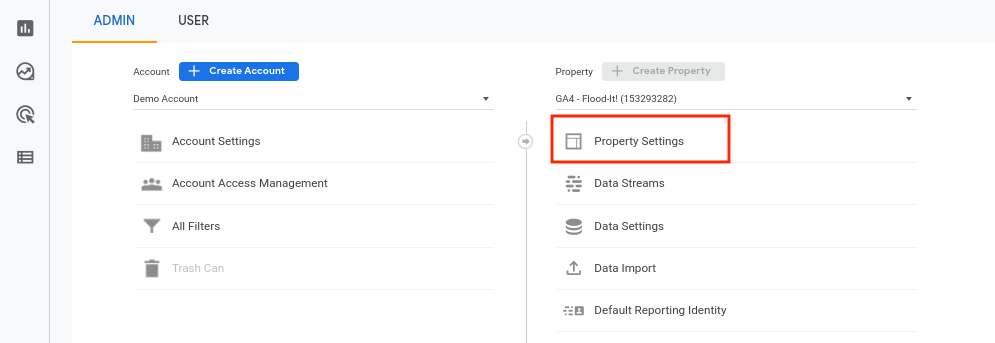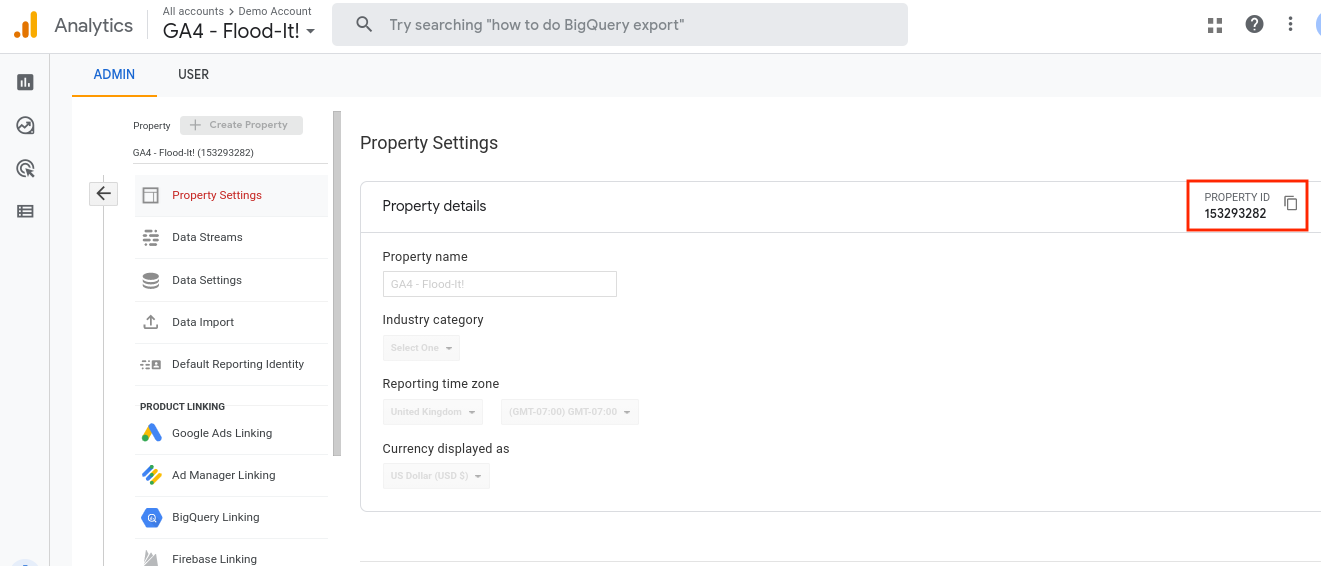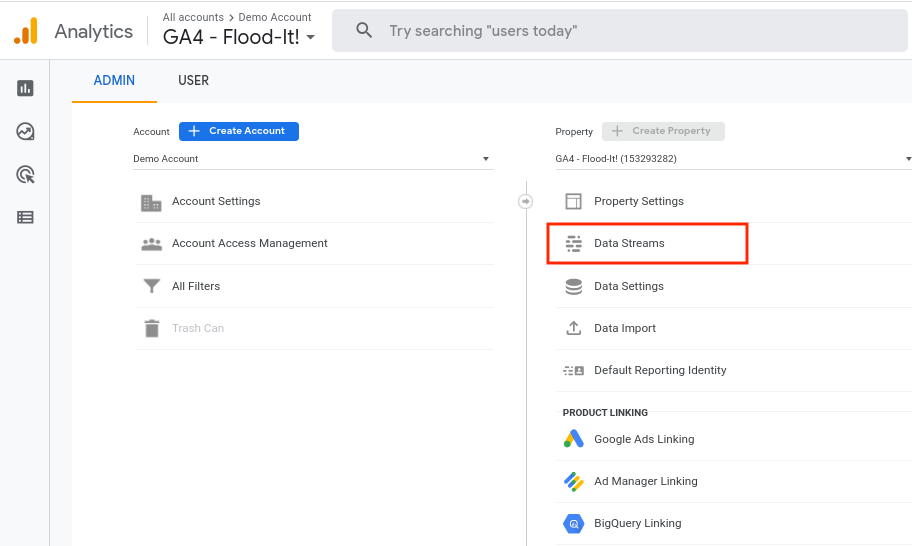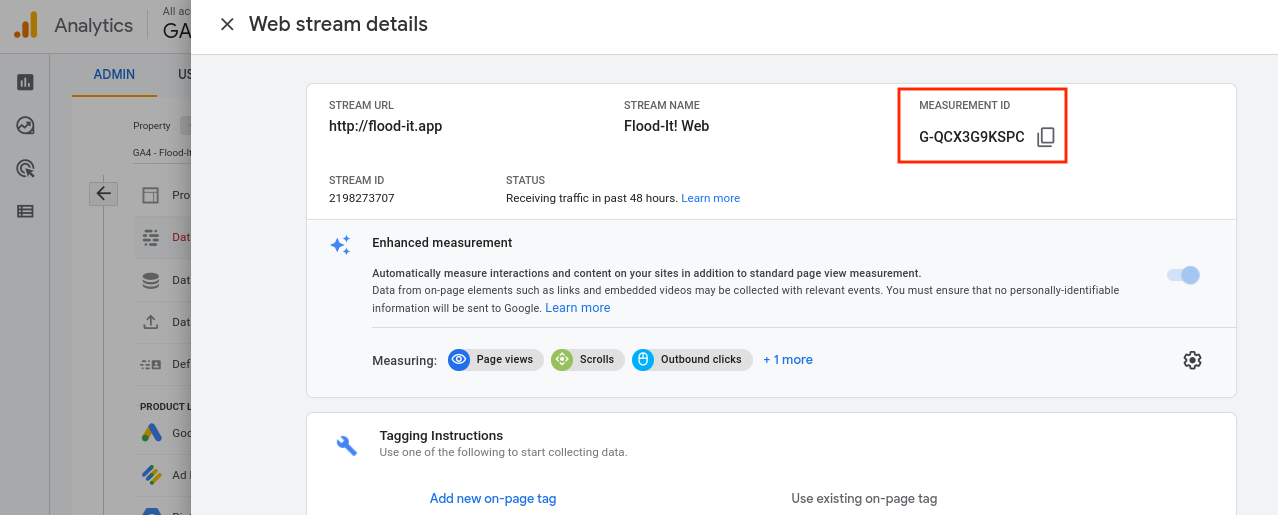Setting up your new Google Analytics 4 property requires quite a few steps. From creating your property to enabling data collection, there are a lot of details you need to address before you can get started with your analysis…including collecting your measurement ID.
But, what is your measurement ID in a GA4?
You can find your GA4 measurement ID by going to the Admin section in your property. This ID allows you to enable tracking on your website and mobile apps. You can place this ID directly on your website or in Google Tag Manager.
Today we’re going to discuss what your measurement ID does and how things are different between GA4 and Universal Analytics. So, if you’re just getting started with your GA4 property, this guide is for you! Come with us to learn how to start tracking in your new property.
If you'd prefer to watch instead of read, you can learn everything about GA4's measurement ID via our YouTube channel:
What is a Measurement ID?
Before you start tracking your performance in Google Analytics or Google Tag Manager, you have to insert your measurement ID. In Universal Analytics, you used a tracking ID to enable data collection, but in GA4, you now have a measurement ID. So don’t be afraid that the tracking ID you’re used to is gone!
There are some differences between your tracking ID and measurement ID, which we’ll discuss in the next section. However, the main point to note here is that, in GA4, you will use a measurement ID to enable tracking. You will not have a tracking ID in your new GA4 property.
Difference Between Measurement ID and Tracking ID
There are some significant changes between your Universal Analytics and GA4 properties, and one of the big ones is the fact that you now have a measurement ID rather than the tracking ID you had in Universal Analytics.
In UA, you need to use your tracking ID to get Analytics to start collecting data. Your tracking ID is a string that looks like UA-000000-4. It has to be inserted into your site’s tracking code so Analytics knows which account and property to send the data to.
On the other hand, if you have a Google Analytics 4 property, you’ll need to use your measurement ID to start tracking. Your measurement ID will be formatted like G-XXXXXXX. It will identify your data stream and then send the collected information to your GA4 property.
Difference Between GA4 Measurement ID and Property ID
Some other confusion may arise between your GA4 measurement ID and property ID. In GA4, you have a property ID and measurement IDs. Don’t confuse your property ID with your measurement ID because your property ID will not enable data collection.
In GA4, your measurement ID identifies your data streams. You can have multiple data streams (website or mobile apps) feeding into the same property. For more information on data streams, check out our previous post here.
Each of your data streams will have a unique measurement ID, but your property ID will be consistent among them.
To find your GA4 property ID, follow these steps:
1. Click on “Admin” on the bottom left.
2. Under “Property,” click “Property settings.”

3. See your property ID in the top right.

But remember, this property ID will not enable data collection. For that, you need your measurement ID. We’ll discuss where to find your measurement ID and how to use it coming up, but first, let’s take a quick look back at Universal Analytics.
How to Find your Universal Analytics Tracking ID
Before we move on to discussing how to find and use your GA4 measurement ID, we’ll take a moment to talk about Universal Analytics. Because GA4 uses a measurement ID instead of a tracking ID, you may need a UA tracking ID for various reasons. If you do, then you’ll want to stick with a Universal Analytics property.
To find your Universal Analytics tracking ID, follow these steps:
1. Go to “Admin” on the bottom left.
2. Under “Property,” click “Tracking info.”

3. Click “Tracking code.”
4. Your tracking ID is in the top right.
There are a few exceptions, but usually, you’ll put your GA tracking code immediately after the <head> tag in the header of each page of your site.
If you put the code in the footer, especially if you run other scripts on your site, Analytics might not track your users properly. This happens because the scripts are triggered in the order they’re embedded on your page.
So, if you put your Analytics tracking code in the footer, the prior scripts could prevent it from running. This can lead to issues with your data collection, so it’s not the best way to get accurate results.
For more details and using your tracking ID in Universal Analytics, refer to the setup guide here.
You can also check out our previous post on using your tracking ID in Universal Analytics here.
How to Find Your GA4 Measurement ID
If you’re just getting started with your GA4 property, we also recommend checking out our previous article about the GA4 setup assistant. This covers all the basics of setting up your GA4 property and getting started.
Once you’re ready to collect data, you’ll want to find your measurement ID. So first, let’s show you where to find it, and then we’ll discuss enabling data collection in GA4.
Finding your GA4 measurement ID is super easy! Just follow these steps:
1. Go to your GA4 property and click on “Admin” on the bottom left.
2. Under “Property,” click “Data streams.”

3. Click on “Web.”

4. Click on your web data stream name.

5. Your measurement ID is in the top right.

How to Enable Data Collection With Your Measurement ID
To enable data collection in your GA4 property, you’ll need to place your measurement ID on your website or insert it in Google Tag Manager. You can place the JavaScript code directly on your website or through Google Tag Manager, but we recommend the latter.
Since you need to use Google Tag Manager to get the most out of your GA property, we recommend deploying your GA4 measurement ID through GTM.
Let’s walk you through our suggested way to set up data collection—using Google Tag Manager. Note, this can be a little tricky if you’re not experienced, so we recommend working with a developer or someone with experience coding if you’re new to Analytics.
To enable data collection using Google Tag Manager, just follow these steps:
- Go to tagmanager.google.com and access your workspace in your container.
- Go to “Tags” > “New.”
- Click “Tag Configuration.”
- Choose “Google Analytics: GA4 Configuration.”
- Enter your measurement ID.
- If you’re ready, no, you can configure your “Fields to Set.” We suggest using the recommended event parameter names here.
- You can also enter any custom user properties at this time in “User Properties.” You can set up to 25 user properties in your GA4 properties, and Analytics does automatically log some user properties.
- You can also go to “Advanced Settings” and set a Tag Firing Priority or use Tag Sequencing to make sure your Configuration tag fires first, before other event tags.
- Click “Triggering” and select the events that would cause the tag to fire.
- Save your tag and publish your container.
You can also refer to the full support guide here for more details and resources.
On the other hand, if you want to enable data collection but inserting your measurement ID directly on your website, you can follow the guide here.
Installing your GA4 measurement ID isn’t very complicated, but it is very precise and you have to make sure it’s done and tested properly before you can rest assured you’re accurately collecting data. So, again, we recommend you work with a developer or someone experienced if you’re not comfortable with light coding.
Measurement ID in Google Analytics 4
Enabling data collection with your measurement ID can take some time, especially if you’re new to Google Analytics. But luckily, the process is very straightforward, and you can take your time configuring things how you like.
We recommend using Google Tag Manager to enable data collection for your GA4 property. This ensures you’re making the most of your Analytics experience. Along those same lines, we also highly recommend keeping your old Universal Analytics properties for the time being, as GA4 is still new and rolling out updates all the time.
Did you run into any issues installing your GA4 measurement ID? Let us know!
